Paul & Ellen's excellent adventure in Rome
July 2015 |
| |
| We stayed in a hotel on the AVENTINE HILL, a tranquil neighborhood of villas and condos with very little traffic. |
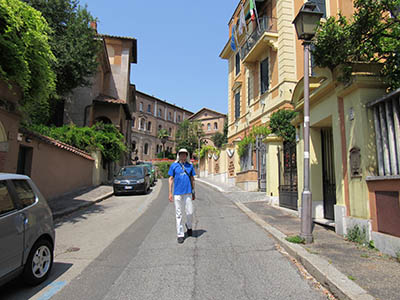 |
|
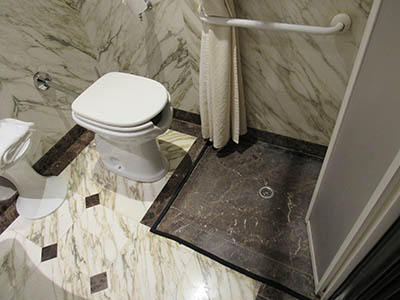 |
| Sometimes it was easier to walk in the street, near our hotel, because the sidewalks were so narrow. |
Our economy room in the Hotel San Anselmo was lovely except that the toilet was too close to the shower (and the shower flooded the whole floor because there was barely any lip around the shower floor). |
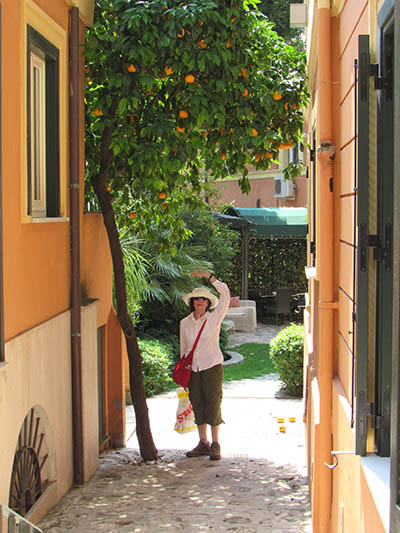 |
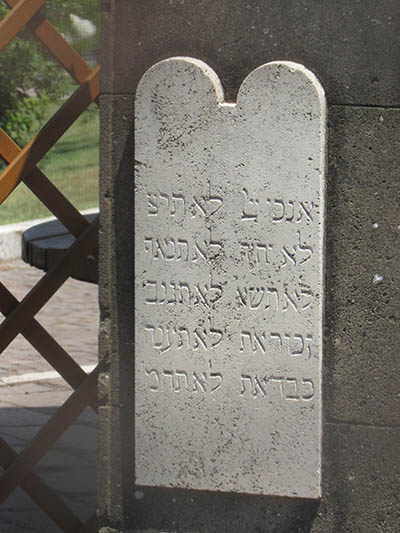 |
| In the hotel courtyard there was a fully-loaded orange tree. (Heads up!) |
Down the hill was Rome's public rose garden. It was a Jewish cemetery from 1645 until 1934 when Rome’s fascist authorities decided to build a park and road for a Mussolini parade. They pledged to move all the remains to another Jewish cemetery, but were in a hurry and left entire sections unexcavated.
After WWII, the city created the rose garden, with a Hebrew plaque of the Ten Commandments and paths in the shape of a menorah. |
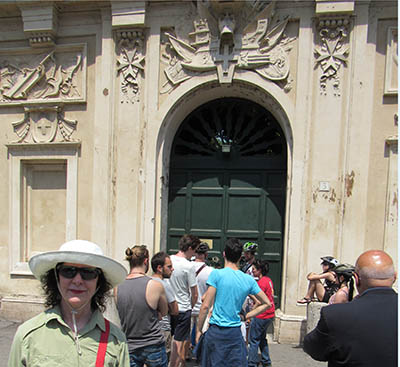 |
|
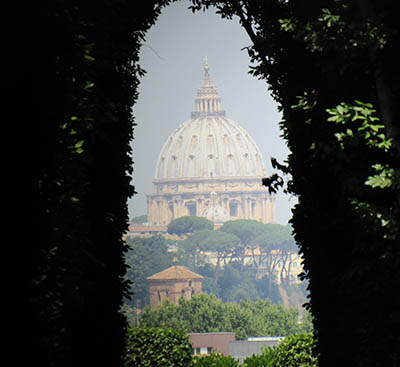 |
| Up the hill from the hotel is the headquarters of the Knights of Malta. Why are these tourists waiting on line? |
|
To peep through a keyhole in the door and see this view. |
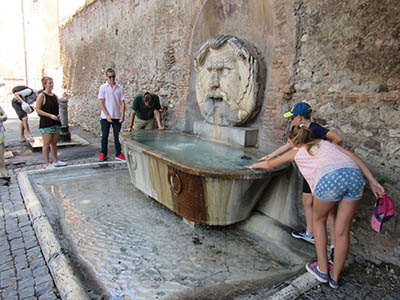 |
|
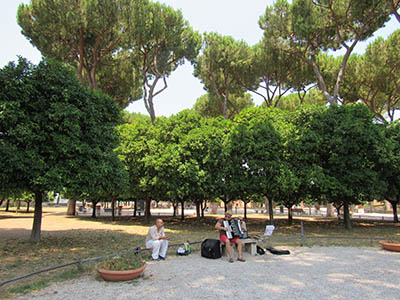 |
| In the Knights of Malta piazza, there is a wonderful fountain. Spanish tourists were dunking their heads in it, so I asked if this was a custom and they said no, it was because it was so hot! |
|
The Garden of Oranges is behind the fountain. There were musicians and jewelery makers selling their wares. |
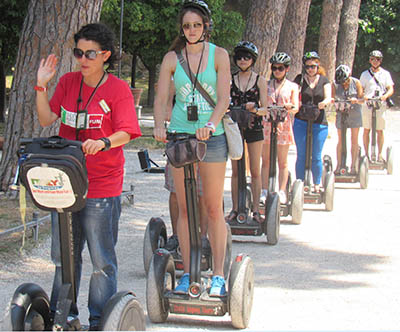 |
|
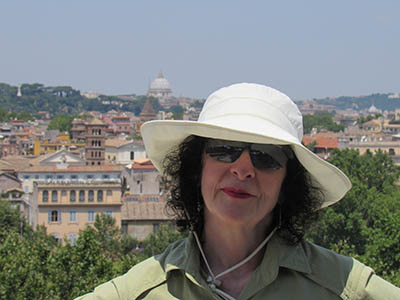 |
| This Segway tour was also in the Garden of Oranges. Perhaps they had just come back from the lookout... |
|
...where there is a magnificent view of St. Peter's Basilica across the Tiber. |
|
| The BATHS OF CARACALLA and CIRCUS MAXIMUS were very close to the Aventine Hill. |
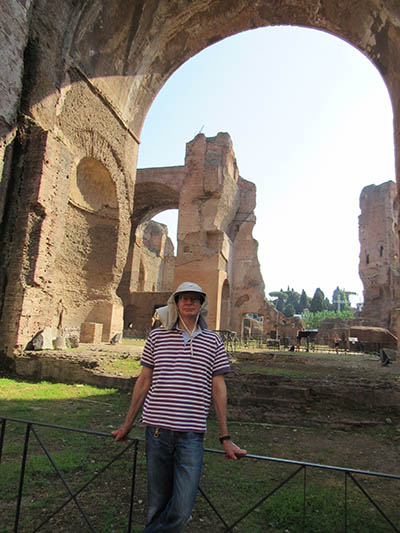 |
|
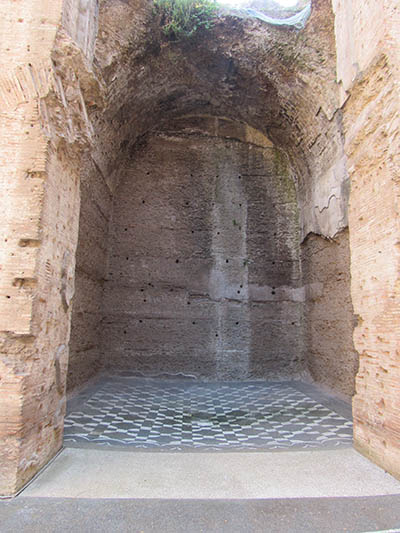 |
| Emperor Caracalla ruled jointly with his father, Septimius Severus, for 13 years and upon his father's death was supposed to do the same with his brother but he had him killed. The rest is history ... and baths. |
|
Caracalla had the complex built as a piece of political propaganda - to curry favor with the public and to leave a legacy. Romans from every social class enjoyed themselves in the impressive, exquisitely detailed buildings, unfortunately reduced to scavi (ruins). |
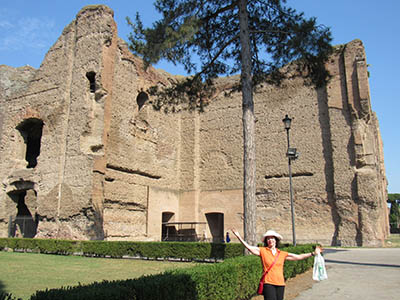 |
|
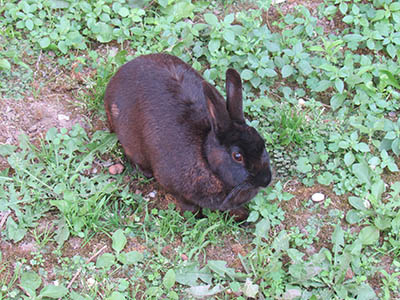 |
| It is now a venue for summer concerts by the Rome Opera company... |
|
...and bunnies. In Greco-Roman myth, the hare represented romantic love, lust, abundance and fecundity. Carvings of rabbits eating grapes and figs appear on Greek and Roman tombs where they symbolize the transformative cycle of life, death and rebirth. |
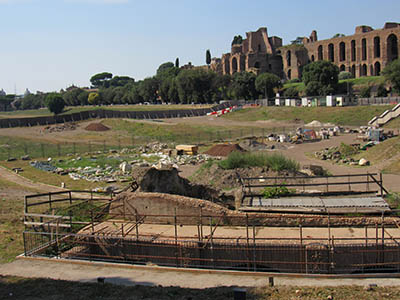 |
|
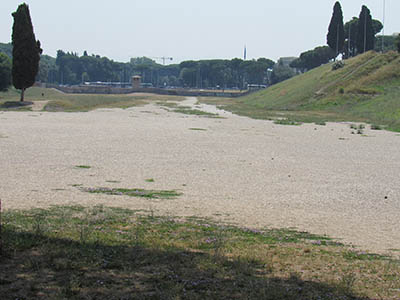 |
| Circus Maximus is an ancient Roman stadium for chariot racing ... |
|
...wild animal fights, public executions and gladiatorial contests. |
|
| Between the Circus Maximus and the Tiber is the FOARUM BOARIUM, ancient Rome's large meat and fish market. The two small temples standing in this area are the best preserved temples from Rome's republican period (pre-Julius Caesar). Their survival is due to the fact that they were consecrated as Christian churches in medieval times. |
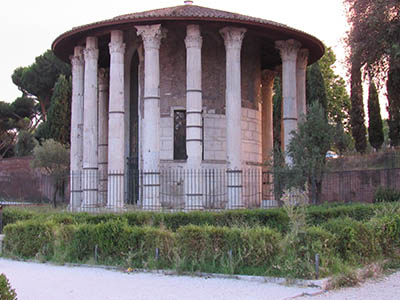 |
|
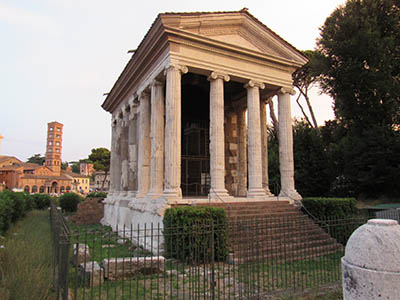 |
| The Temple of Hercule Victor, ca. 142 BCE, is on a heavily trafficked street. Hercules was protector of the olive trade. |
|
Next to it is the Temple of Portunus, ca. 80 BCE. Portunus was protector of seafarers and harbors. |
|
| PALAZZO DORIA PAMPHILJ, a splendid edifice of an aristocratic family (including Andrea Doria and a pope) contains one of the most valuable private collections of paintings in the world. |
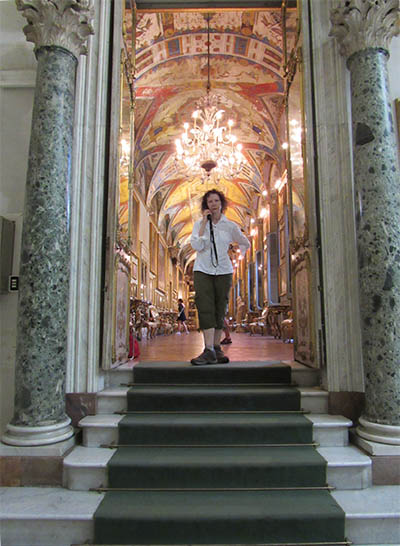 |
|
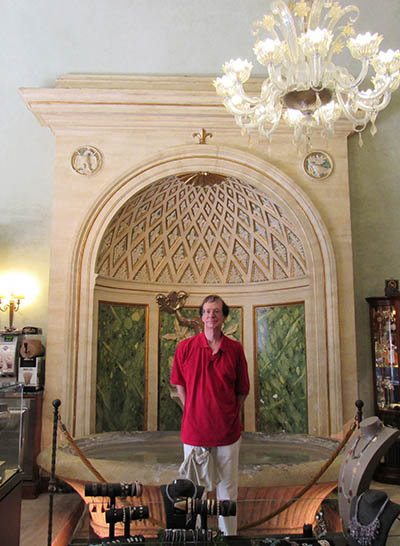 |
| The entry fee includes use of a listening device narrated by a scion of the family. |
|
Elegant Caffe Doria is in the back - it also has an outside entrance. |
|
| TIVOLI is a hill town about an hour northeast of Rome. The area has been popular with Rome's moneyed classes since antiquity because of its cooler climate. Tivoli's two most famous tourist attractions are the ruins of Hadrian's Villa and the gardens of the Villa d'Este. |
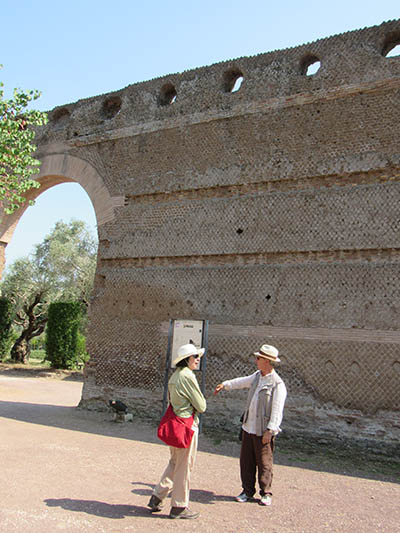 |
|
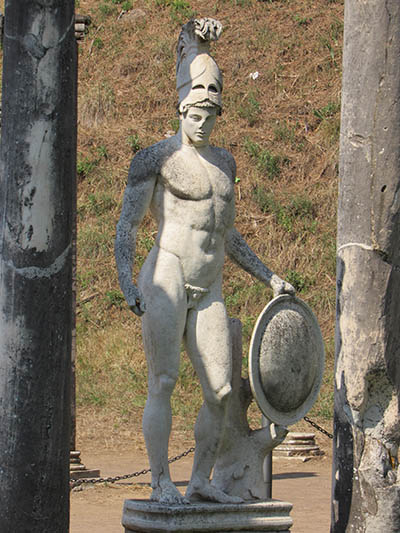 |
| Giovanni Giammei, our wonderful private tour guide, drove us to Tivoli. His commentary on Hadrian's Villa made the ruins come to life. |
|
Hadrian was very interested in architecture and the arts. He helped design his villa and preferred to stay here rather than Rome because of a strained relationship with the Senate. |
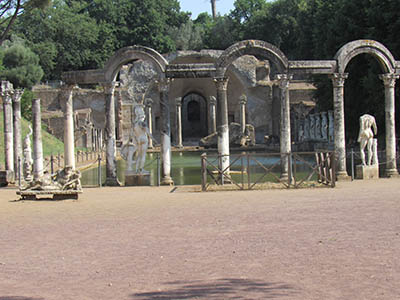 |
|
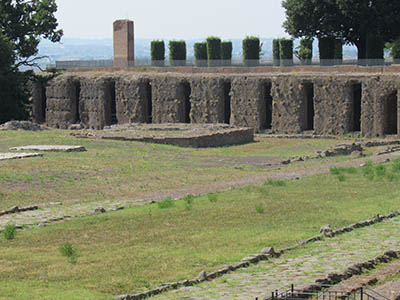 |
| Built as a private summer retreat from 118-134 AD, Hadrian's Villa was a vast open-air museum of the finest architecture of the Roman world. The grounds covered 300 acres and were filled with full-scale reproductions of the emperor's favorite buildings from Greece and Egypt. |
|
There was a sophisticated infrastructure where slaves and supplies were kept below ground. |
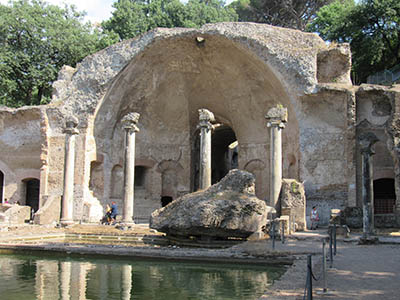 |
|
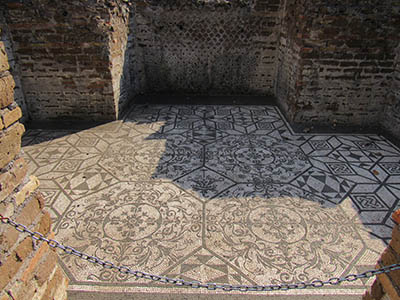 |
| There were theaters, Greek and Latin libraries, two bathhouses, and formal gardens with fountains, statues and pools. |
|
There was a double row of guest quarters, each with a unique mosaic floor. |
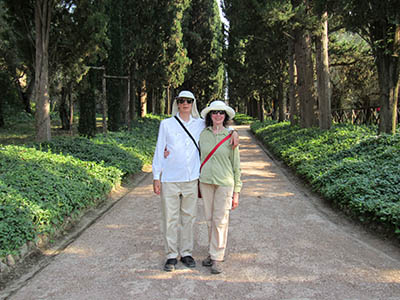 |
|
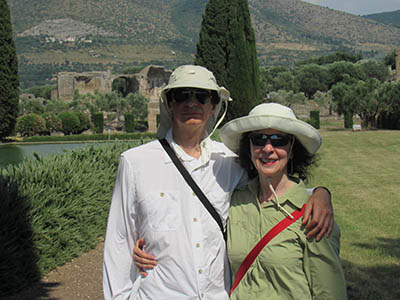 |
| Today Hadrian's Villa is beautiful... |
|
...and serene (except for all the strangely dressed tourists romping about). |
| |
|
|
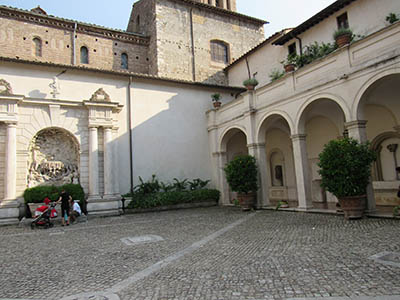 |
|
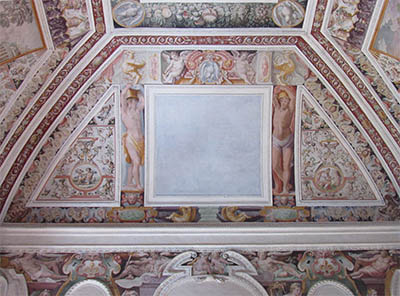 |
| Giovanni then took us to the Villa d'Este in Tivoli. It didn't look large but that was because we entered at the top. |
|
And walked down (and looked up). |
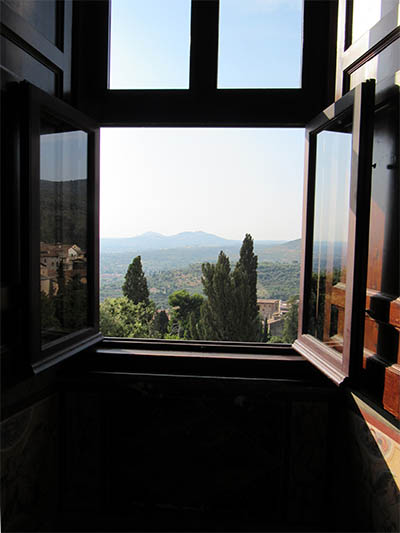 |
|
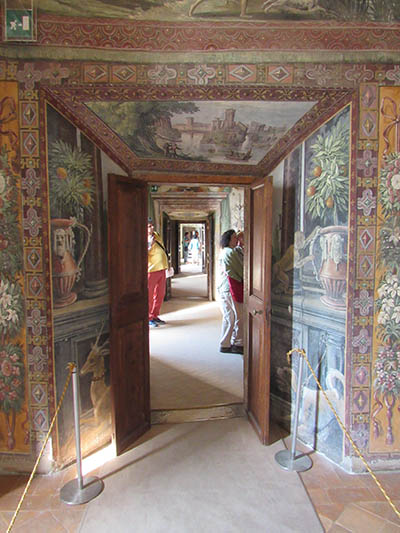 |
| It was built by wealthy Cardinal Ippolito II d'Este, son of Lucrezia Borgia. |
|
This was meant to impress other Cardinals so they would chose him as pope, like his grandfather Pope Alexander VI. |
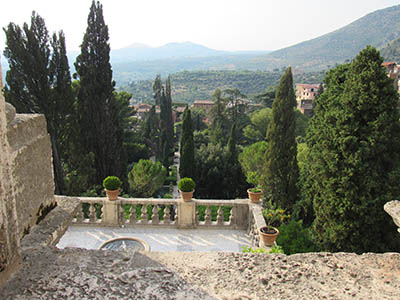 |
|
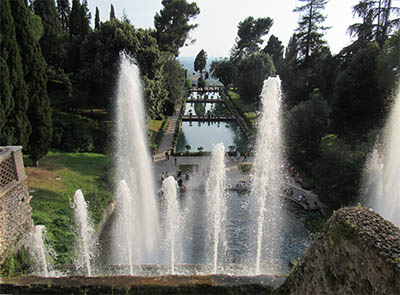 |
| It was built from 1550 until his death in 1572. |
|
As you walk down from level to level... |
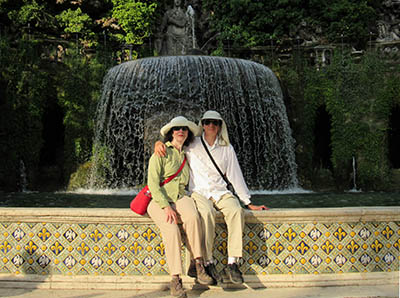 |
|
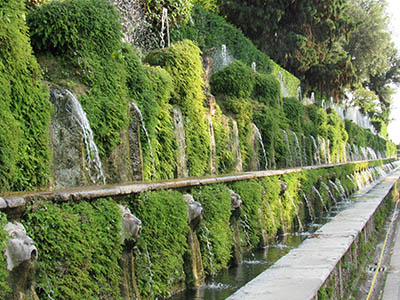 |
| ...there are spectacular fountains. In those days you showed off by building elaborate fountains. |
|
That he failed to become pope is water under the bridge! |
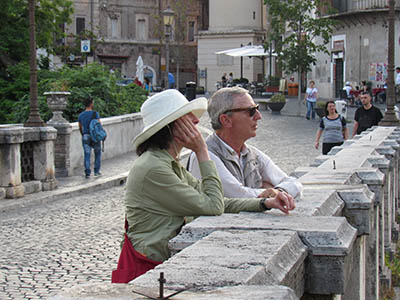 |
|
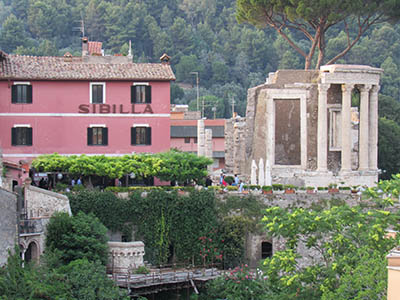 |
| Ellen and Giovanni look across the ravine to... |
|
...Sybilla's restaurant, which is built near the ruins of the Temple of Sybil. We didn't eatthere because Paul had a bad cold that he caught on the cruise. |
|
| CASTEL SANT'ANGELO was originally the Mausoleum of Hadrian and was then converted to a military fortress and castle for the popes. |
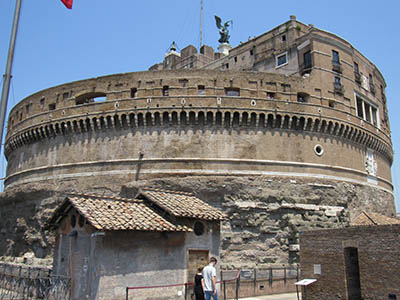 |
|
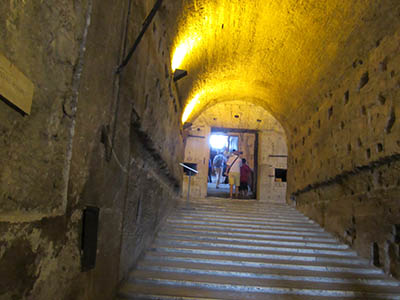 |
| The Passetto di Borgo is a secret passageway which connects Castel Sant’Angelo to the Vatican City. (We did not see it. It's a secret, shhh) |
|
This is the original ancient interior. |
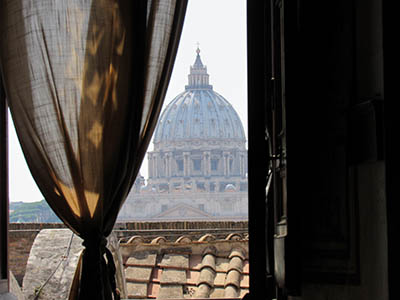 |
|
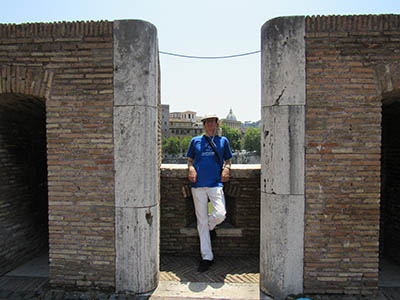 |
| A splendid view of St. Peter's. |
|
This is the fortress area. |
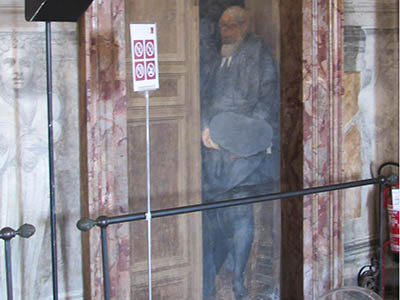 |
|
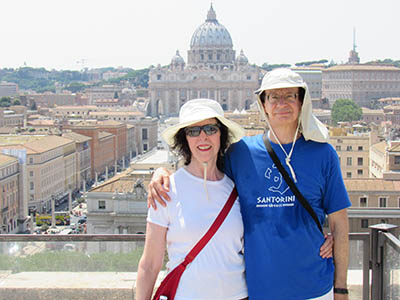 |
| Here's looking at you, kid. |
|
A photo op from the top. |
|
| Miscellaneous Rome |
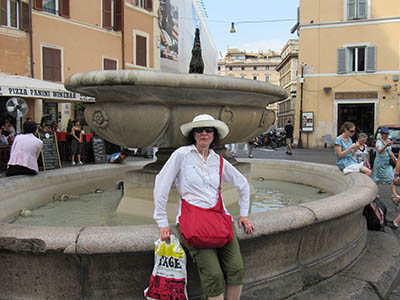 |
|
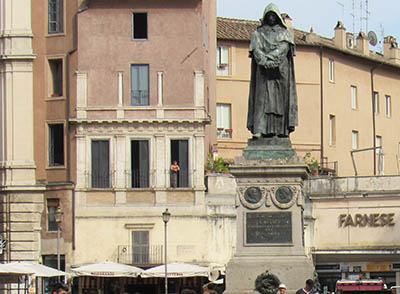 |
| This was our first visit to Campo dei Fiori. At sunset, it transforms into a nightlife haunt. |
|
The statue in the middle of Campo dei Fiori commemorates Giordano Bruno, philosopher and Dominican monk, who was accused of heresy and burned alive in that very spot in 1600. |
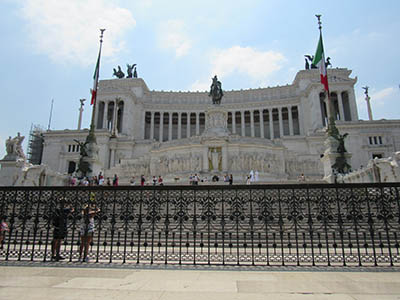 |
|
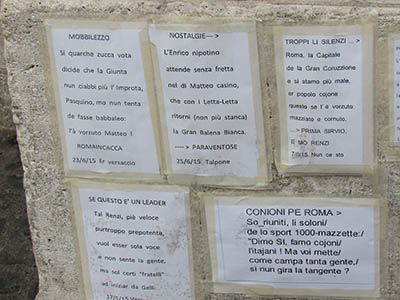 |
| The Victor Emmanuel II Monument, aka "Wedding Cake", commemorates the first king of unified Italy, 1861. (We have yet to go inside.) |
|
Since the 1500s, slanderous verses have been posted to a wall near Pasquino, an ancient Roman statue in a small square near Piazza Navona. |
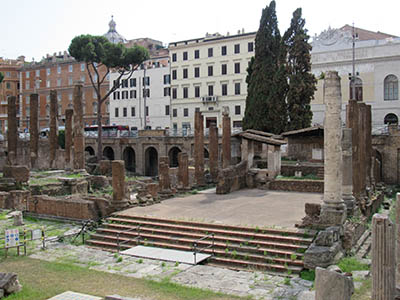 |
|
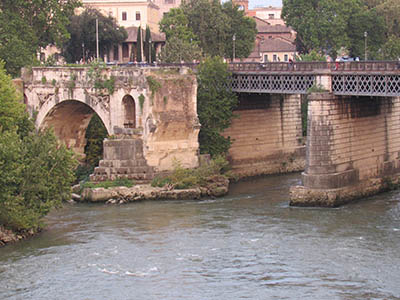 |
| The ruins of Largo di Torre Argentina are right in the middle of a modern thoroughfare. The spot where Julius Ceasar is thought to have been killed is now a cat sanctuary. |
|
The Broken Bridge (Il Ponte Rotto), ca. 179 BCE, is the oldest stone bridge in Rome. It linked the cattle market (the Forum Boarium) with Trastevere. |
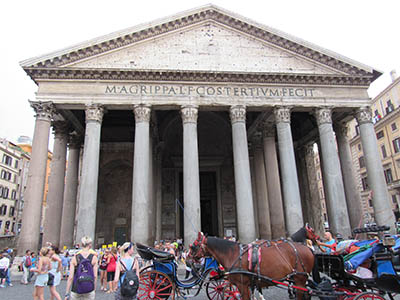 |
|
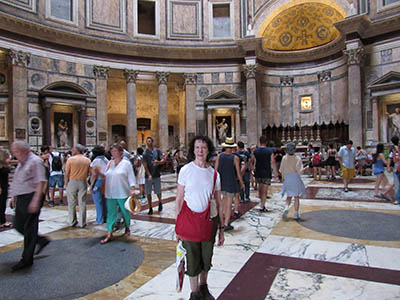 |
| The Pantheon never fails to amaze. Opened in 126 AD, it is one of the best-preserved of all ancient Roman buildings. |
|
It was converted to a Christian Church in 609. The painter Raphael and two kings of Italy are buried here. |
 |
|
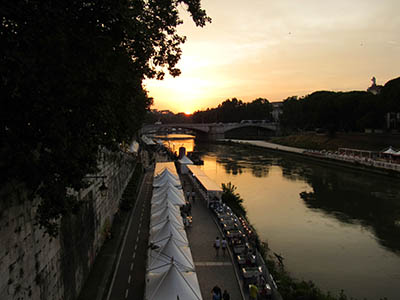 |
| Ponte Sant'Angelo leads to/from Castel Sant'Angelo. |
|
Temporary summer tents on the Tiber River contain restaurants, bars and stalls. |
<
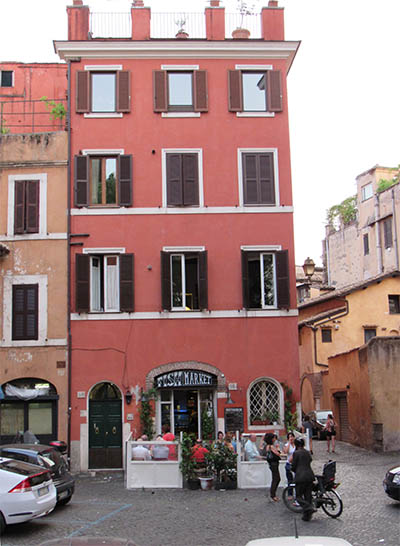 |
|
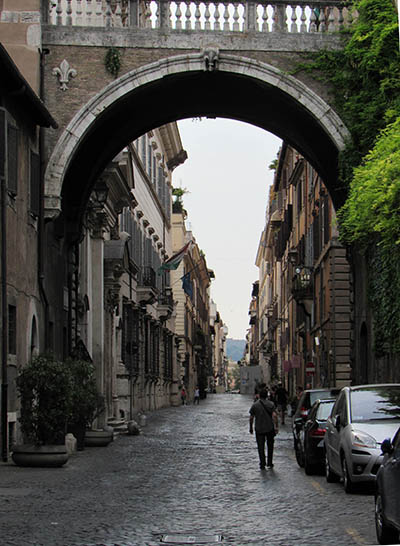 |
| This building in Trastevere caught my eye. It has a restaurant called Fish Market and got good reviews on Trip Adviser. We will remember it for our next trip. |
|
Via Giulia was designed by Pope Julius II (who commissioned Michelangelo to paint the ceiling of the Sistine Chapel) and became the most fashionable street in the sixteenth century. Today it is one of Rome's elite shopping streets. |
| |
|
|
| created by webstarlines.com |













































































































